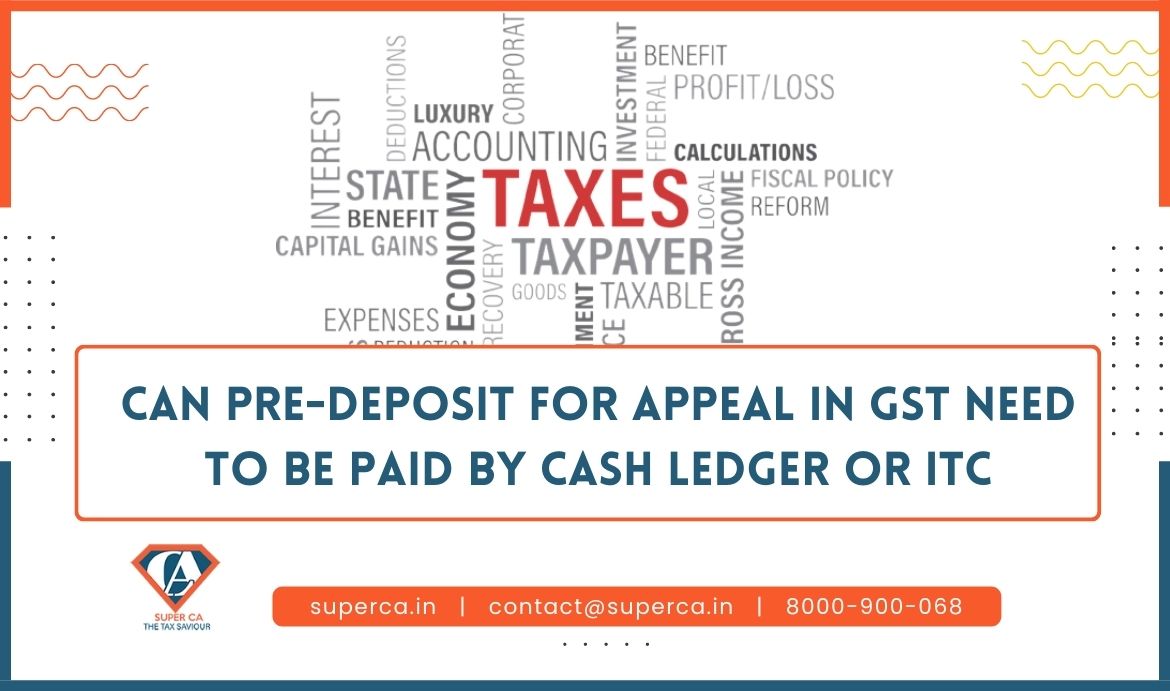
About
As per the GST law, the appellant is required to fulfill the pre-deposit provisions. The laws state that pre-deposit is a prerequisite for filing the appeal before the appellate authorities. In this article, we’ll discuss whether such payment can be made using the balance available in the electronic cash ledger or credit ledger.
The Orissa High Court earlier in the case of Jyoti Construction Jajpur (WP 23508/2021, 7-Oct-2021) held that the output tax payable cannot be equated to the amount of pre-deposit required to be made by the assessee and notified that there is a distinction between an amount which is refundable and an amount which is liable to be paid as output tax. It subsequently rejected the appeal of the assessee and stated that paying the pre-deposit amount through the electronic credit ledger at the Appellate Authority level is defective.
The Assessee later filed a Writ Petition against this Rejection Order. The reliance has been placed upon the clarificatory circular, issued by Government of India, on 06th July 22 where it has been clarified that any payment towards output tax, whether self-assessed in the return or payable as a consequence of any proceeding instituted under the provisions of GST Laws, can be made by utilizing amount available in the electronic credit ledger of respective individuals.
Electronic Cash Ledger vs Credit Ledger
Electronic cash ledger
An electronic cash ledger is like an e-wallet of registered people. It consists amount of GST deposited in cash to the government. Any GST payment made in cash or through a bank reflects in the Electronic Cash Ledger. After the deduction of Input Tax Credit or ITC, any balance tax liability has to be paid using balance in Electronic Cash Ledger. In other words, balance in Electronic Cash Ledger is utilized for payment of GST liability
Electronic credit ledger
The electronic credit ledger displays the input tax credit balance available to the registered individuals. It reflects the amount of Input Tax Credit available to the taxpayer. Thus, every claim of input tax credit of the registered taxpayer eligible for claiming such a credit is credited to this ledger. The amount available in the electronic credit ledger is utilized in making payments towards outward tax liability by the registered individuals.
What is ITC?
Input Tax Credit (ITC) simply means the tax already paid by a person at time of purchase of some goods or services which is available as deduction from tax payable.
Say for when you buy a product or hire any service from a registered dealer, you pay taxes on the purchase and on selling, you collect the tax. You calibrate the taxes paid at the time of purchase with the amount of output tax (tax on sales) and balance liability of tax (tax on sales minus tax on purchase) has to be paid to the government. This mechanism is called utilization of ITC.
Let’s take an example- You as a trader purchased goods of Rs. 100 and paid tax of Rs 10 on it. Now the same goods are sold by you at Rs. 150 and a tax of Rs. 15 is collected from the buyer. Now you have to pay Rs.15 to the government for that good but you had already paid Rs.10, so this Rs. 10 is your ITC and it will be allowed as deduction from tax payable and you have to pay net Rs. 5 as tax. You have to report the same while filing your GST return.
Suggested Read: What Is Input Tax Credit?
Trending Stories:
Conclusion
Though the Department has issued a clarification on the circular, issued by the Government of India, on 06th July 22 but still few Officers are insisting on pre-deposit through cash because the language in the clarification was not clear. Thus it becomes imperative that the legislative amendments should be brought to allow payment of pre-deposit using the electronic credit ledger.





